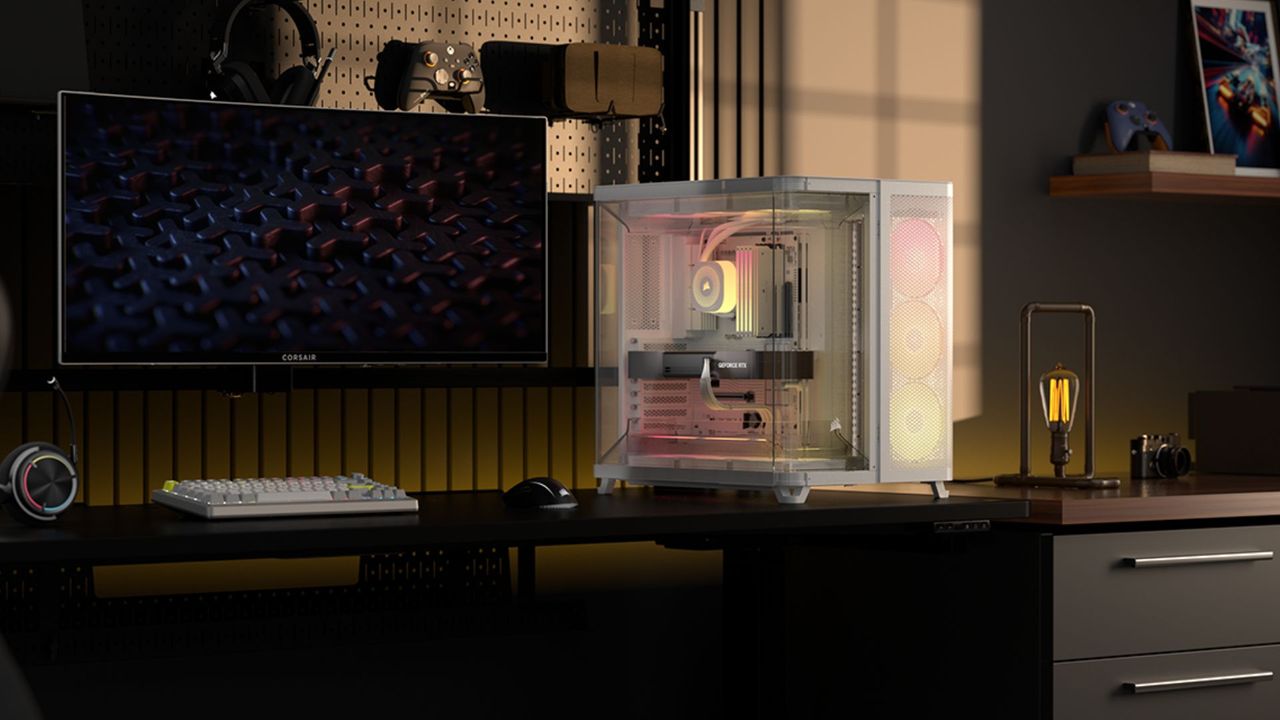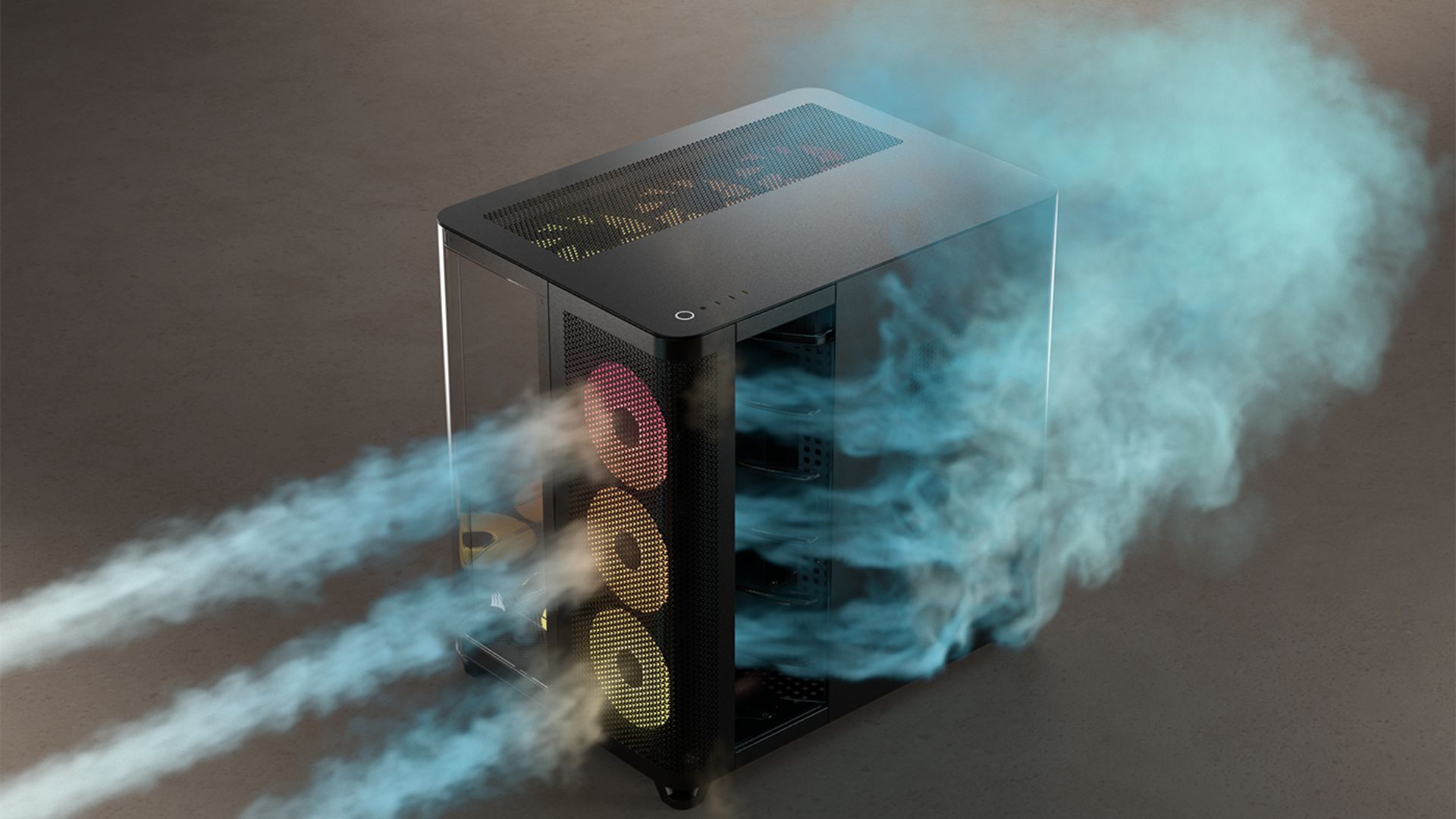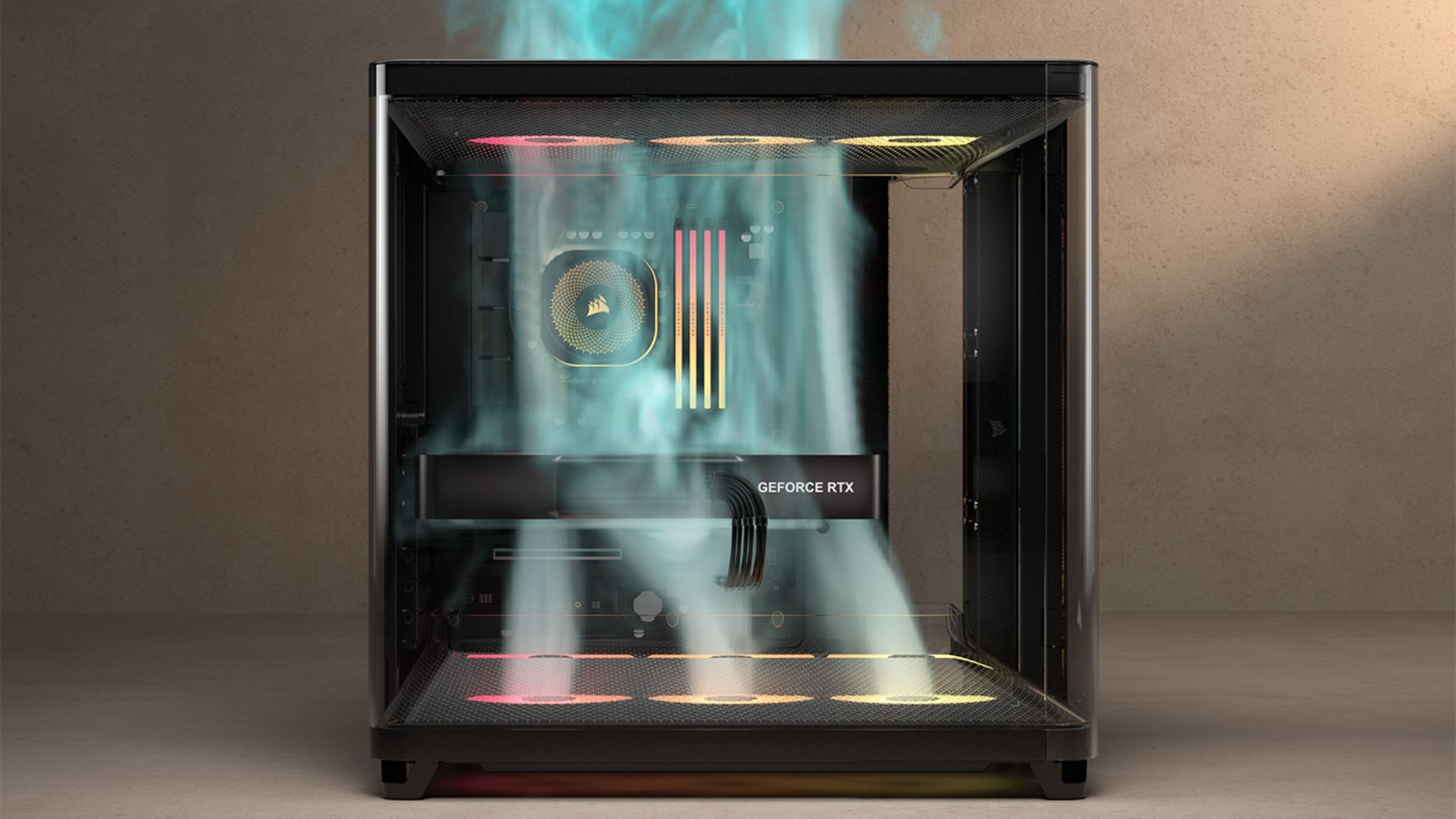
Corsair likes to innovate with its PC cases, and that's one of the reasons I love this brand when it comes to PC building. My first build was in a Corsair 2000D Airflow case, which was the first-ever ITX small form factor chassis that was capable of squeezing in a full-sized AIO cooler into it. Now, Corsair is reinventing the wheel for standard-sized gaming PCs with the new Air 5400 chassis.
This new ATX case follows up on Corsair's older Air 540, which was the first ever dual-chamber chassis. Now, the Air 5400 introduces a third chamber, meaning you'll have the standard area for your motherboard, components, and graphics card, a second chamber for your power supply and cables, and a third chamber dedicated solely to your AIO radiator and fans that cool your CPU.
You will need to pay for the privilege of this innovation, however. A $229 MSRP for a PC case feels like a heavy investment, so just what does the introduction of a third dedicated chamber do for your PC's performance?
The idea is simple, at least in practice. If you separate out the chambers of your computer for its most hot-headed components, you allow dedicated channels of airflow for all three. The main motherboard and GPU chamber is cooled from intake fans in the bottom of the main compartment, and exhausted by fans on the top (or an AIO if you want to go really heavy duty). The CPU's AIO radiator will take heat from your processor, funneling it out of the second chamber as air is pulled into it by its radiators. The power supply, elevated to around halfway up the third chamber, will exhaust its heat using its vents and integrated fan. Still following?

This all sounds quite complicated, and although it strays quite a bit from conventional airflow plans, it does sort of make sense. The NZXT H3 Flow that I use for my personal build is excellent for a lot of reasons, but only having one channel to optimize airflow for all of your PC's components creates some challenges. With only two frontal intake fans, do you create negative pressure using more intakes at the bottom of your case? If you're not careful, it's easy to create a void between the GPU and PSU if you configure things in a certain way, and this is a common problem with a lot of PC cases.
Corsair's new Air 5400 is designed to make those issues simpler - although I'm not sure it's one for first-time builders, seeing as it's not exactly the norm, and finding YouTube tutorials to build from will be pretty tough.

It's hard to argue with the style of this case, though. Corsair includes three reverse rotor fans with it, and a slightly pricier version will get you an ICUE link to help control lighting. Reverse rotor fans are helpful for quirky case positioning, since you get their RGB effects and correct airflow in alignment. Moreover, the transparent panels on the main side of the Air 5400 have a curve on the corner, which isn't all that common in PC cases that don't have conventional front-to-back airflow. The one on the NZXT Player Three and Maingear Zero Ruby both have a separate, angled panel on their corner, for example.
The Air 5400 was originally shown off earlier in the year at Computex, winning multiple "best of Computex" awards back in May. It's now on backorder as it launches, and the Corsair website says it's estimated to deliver by the 27th of October.
- Shop for gaming PCs at Newegg
- NZXT Player Three: $2,799 at NZXT
- Shop for PC cases at Amazon
If you're on the hunt for more components, check out the best RAM for gaming, the best graphics cards, and the best computer speakers.







